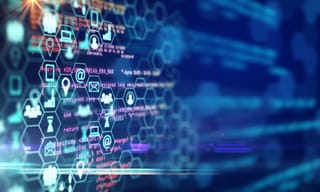Business data analytics is a growing technology capability that offers various benefits to a business. This article examines four developments in business data analytics that you should follow. These are:
- natural language processing;
- real-time analytics;
- edge computing; and
- augmented reality.
What is Business Data Analytics?
Business data analytics is the process of analysing data to pick up patterns and trends within them. The advent of business data analytics is closely linked to the rise of the digital transformation of businesses. This has created and continues to create, more data than ever before. Today, data is generated from all aspects of the business, including human resources, marketing, sales, and inventory management. Through data analytics, a business can:
- mine the data;
- manage data;
- analyse data;
- draw insights about the business’s performance; and
- help the business make better strategic decisions.
It helps businesses move away from solely relying on the instincts and experience of the business’s management team. Instead, it relies on objective facts presented by the data.
1. Natural Language Processing
Let us explore this further. Analysing data falls into four stages:
- data mining;
- data management and storage;
- data analysis; and
- data visualisation.
After mining the data and storing it in a manageable format, data analysts analyse the data during the data analysis. After that, they present their findings using tools like charts, graphs and dashboards to convey the relevant information.
During the data analysis stages, data analysts traditionally use machine languages like python that computers can understand to retrieve the relevant information the business wants from a data set. However, with natural language processing, a person who cannot code can ask questions and obtain the relevant information from a data set. This democratises the data analysis process to a large extent.
Continue reading this article below the form2. Real-Time Analytics
Real-time analytics allows a business to process, measure, and analyse data upon entering it into the database. This allows you to assess changing circumstances in real-time and respond quickly. The alternative to real-time analytics is batch-style analytics. This involves a group of data collected and processed in set interval periods. Real-time analytics are helpful when analysing time-sensitive data like data collected in a factory that could signal safety hazards or track customer satisfaction using the data in the client relationship management software. Adopting real-time analytics capabilities can enable a business to quickly pick up trends and patterns in data and respond to them.
3. Edge Computing
Real-time analytics requires infrastructure that can support analysing the data in real-time. This is where edge computing comes in. Generally, data is collected by devices connected to the internet. This data is transported to cloud servers located far away for processing. This requires more computing power, can cause delays and be cost-intensive.
Edge computing refers to placing the computing power and the servers closer to the devices that create the data to be processed. This can reduce the cost and time it takes to process data, enabling the business to use it to make decisions quickly. However, most people agree that edge computing is not intended to replace cloud computing. Instead, edge computing can free up space for cloud computing to focus on processing more complex and big data.

Know which key terms to negotiate when buying a business to protect your interests and gain a favourable outcome.
4. Augmented Reality
Augmented reality is a technology that can add layers of digital technology into the real world, thereby enhancing our experience. Accordingly, it can potentially change the data visualisation stage of data analytics. As noted above, data analytics usually occurs in four phases, with data visualisation being the final stage.
You can present data through graphs, dashboards, charts or a combination of one or more. Augmented reality allows for presenting data in a much more sophisticated and interactive way. For example, imagine projecting a 3D graph instead of a 2D chart on your screen.
Key Takeaways
In summary, business data analytics refers to analysing data using technology like artificial intelligence to draw insights, patterns, and trends from the data. Accordingly, the findings from a business data analytics exercise are used by a business to make better decisions. Four business data analytics developments include natural language processing, real-time analytics, edge computing and augmented reality.
If you have any questions about business data analytics or how it can be implemented within your business, our experienced legal transformation lawyers can assist as part of our LegalVision membership. For a low monthly fee, you will have unlimited access to lawyers to answer your questions and draft and review your documents. Call us today on 1300 544 755 or visit our membership page.
Frequently Asked Questions
Business data analytics is the process of analysing data to pick up patterns and trends within them.
Natural language processing describes the process whereby a computer is trained to understand natural languages that humans use. English, German and French are all examples of natural languages.
We appreciate your feedback – your submission has been successfully received.










